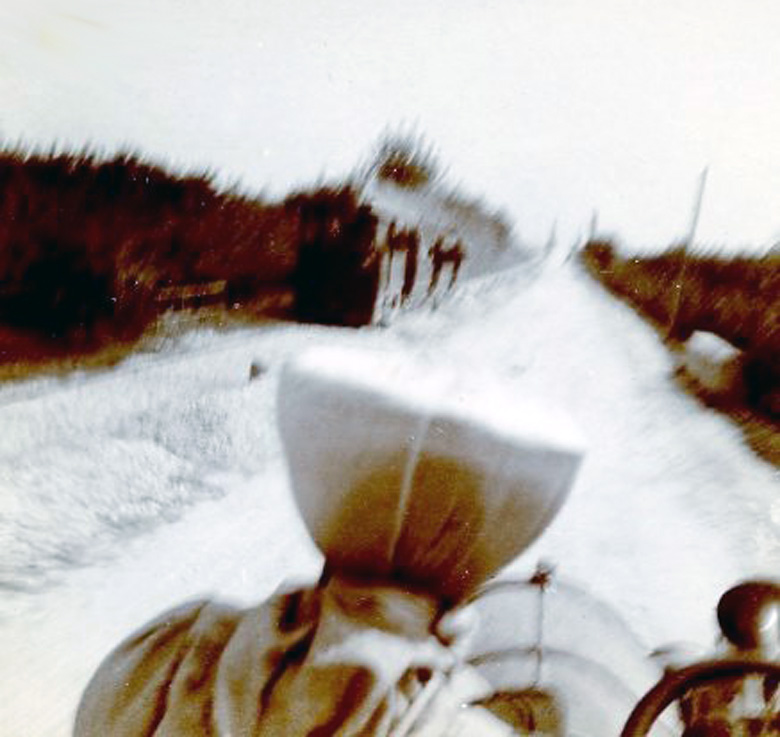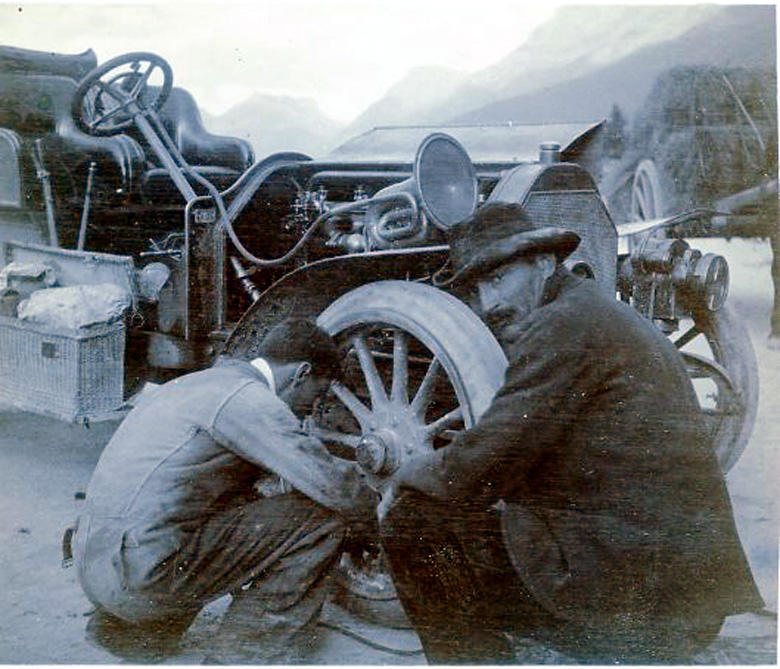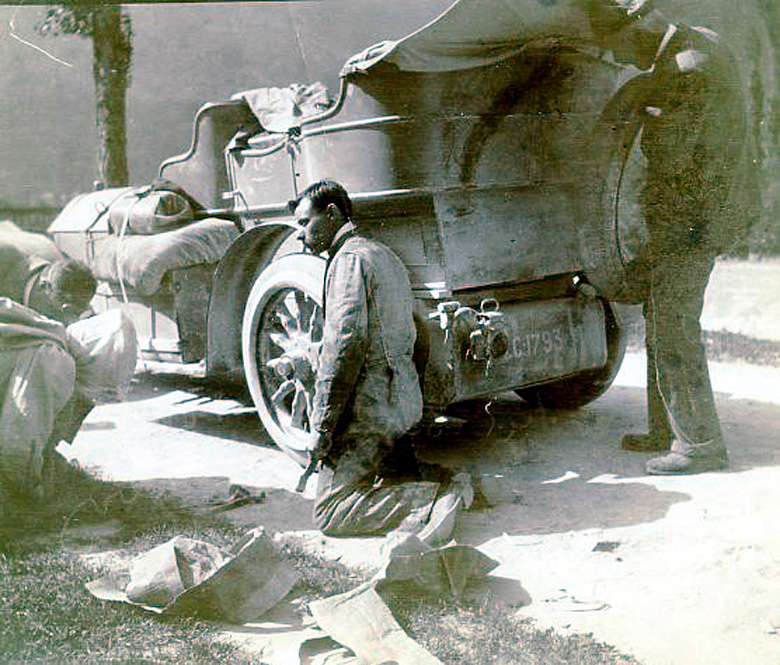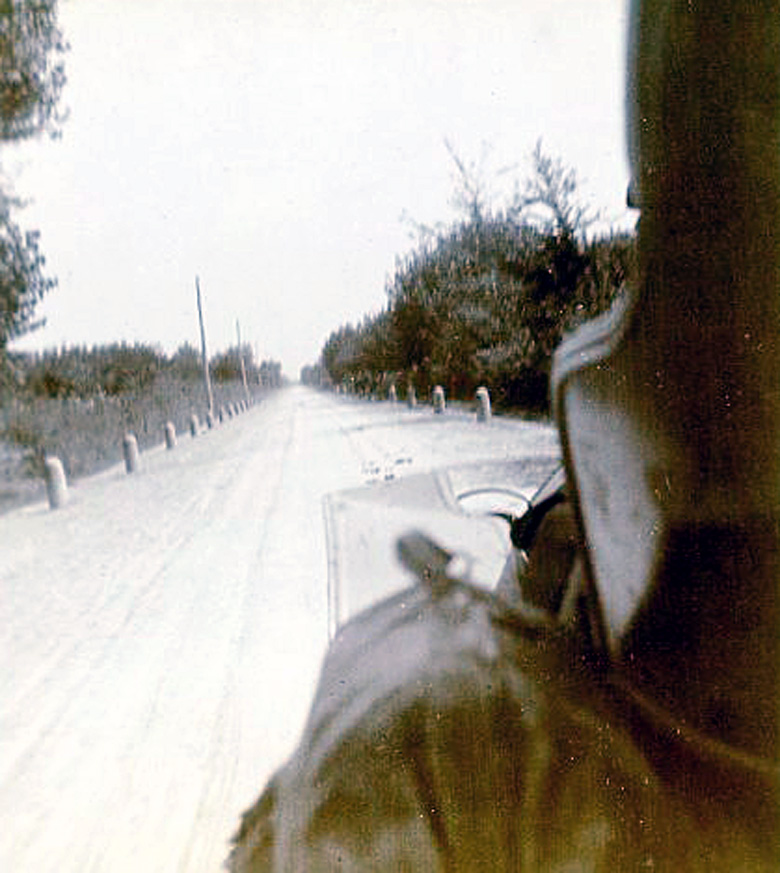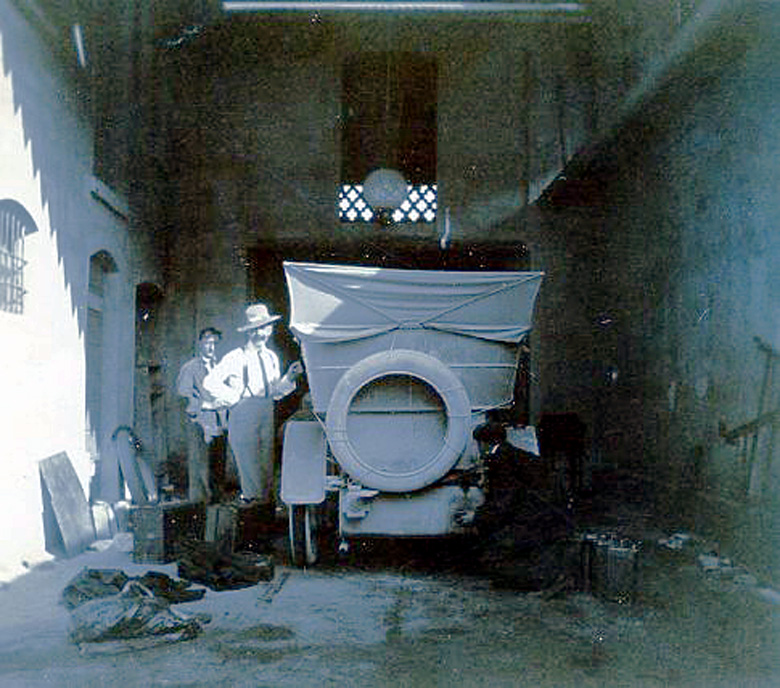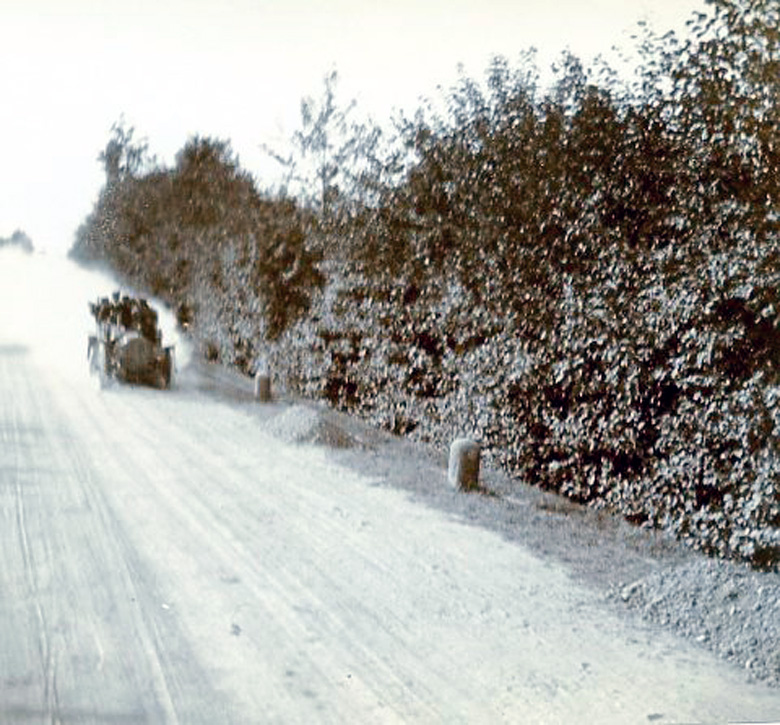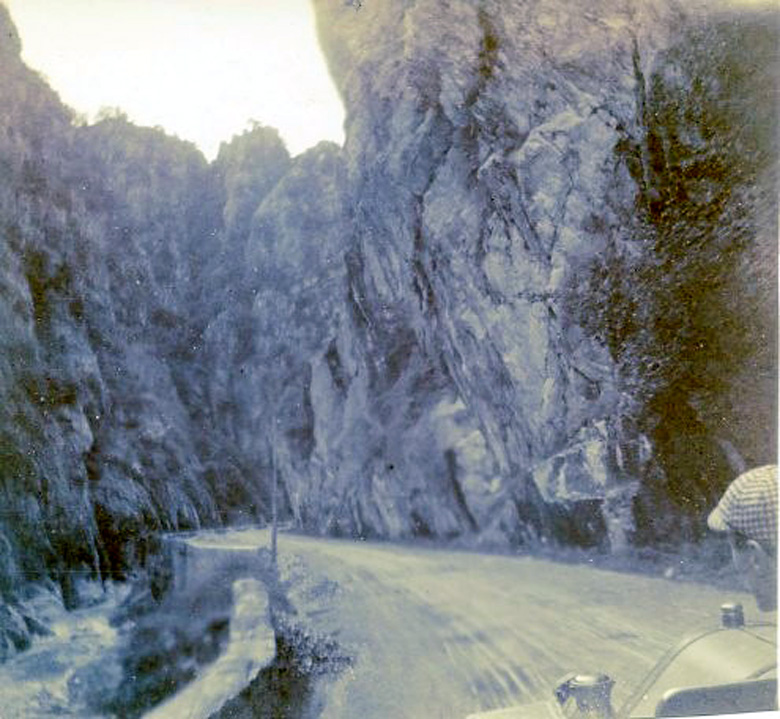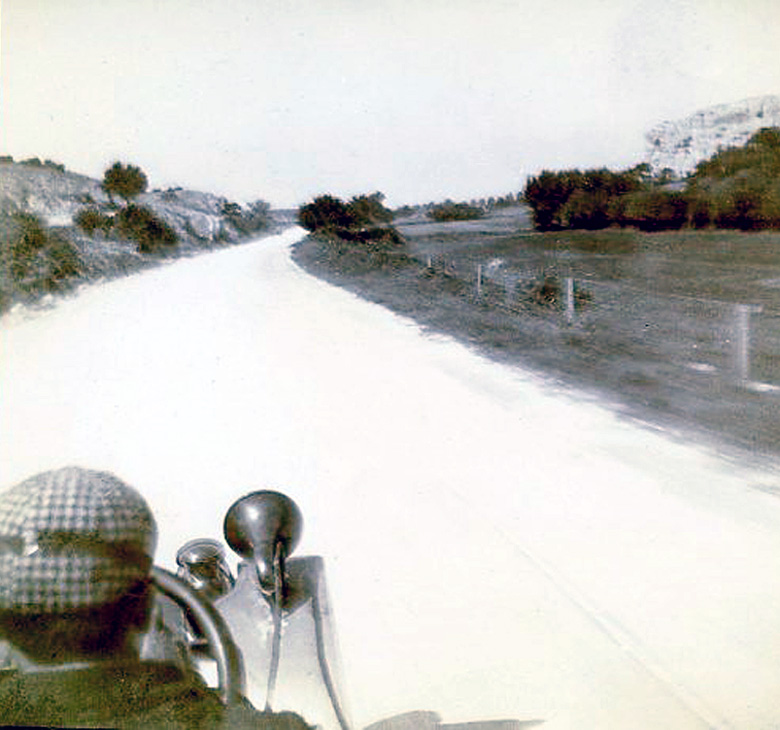The mystery is now 119 years old, as this story was first published in 2020. But we do have a solution, very thoughtfully provided by the Brooklands Museum. Which should give you a clue as to the ownership of the Itala, but we will wait until later to publish the findings. So, this week, let’s look again at what the fuss is all about.-Ed.
By Pete Vack with Dale LaFollette, Aldo Zana and Graham Gauld
Sidebar by Greg Vack
We really enjoy trying to solve automotive mysteries, but this is a real cold case… 115 years old, making it a daunting task.
The twelve photos below, all from 1905, came from the collection of Dale LaFollette, who tells the story of how they were discovered. “Dean Newton was one my partners in Vintage Motorbooks, the collectable book business that we formed in the late 1970s. (Logan Gray owns it today.) Newton found them in a desk drawer and surmised that they had been in a book…we would find all sorts of odds and ends in books we bought.”
The photos were all developed on larger sheets, much like a contact sheet. Long ago, someone had cut them from the contact sheet and put them into an envelope. LaFollette noted that each had handwritten, penciled notes on the back. He recorded what was written on the photos and the information appears below in the captions in italics. “I am fairly sure they might have come from at least two different cameras,” wrote LaFollette. He then scanned the photos.
We then arranged them by the dates indicated on the back, and found that apparently they record trips taken in the fall of 1905, and our guess is that it began somewhere in France. But we are not sure. Nor do we know who the people were who engaged in this trip. We might add that the information on the back of the photos was written in English and may not be entirely correct. Dale quickly enlarged a plate and verified the car is an Itala.
Itala…The most famous car in the world
Itala was established by one of the prolific Ceirano brothers in 1904 and won the 1905 Coppa Florio held in Brescia in September 1905, driven by Giovanni Battista Reggio. It was this event that may have prompted one of the Italas in these photos to cross the Alps to attend the event. Italas were on a winning streak, for the next year Florio’s cup went to Sicily and the Itala team finished 1-2 in the first ever Targa Florio. To top that off, in 1907, the Itala driven by Count Borghese and Luigi Barzini was the first to reach Paris in the fabled Peking to Paris marathon. (Read about the famous Peking to Paris Itala in VeloceToday)
We sent the images of the traveling Itala to two of our correspondents, Aldo Zana and Graham Gauld, who has lived in the South of France for many years. In turn, Zana asked Donatella Biffignandi and Antonio Amadelli, experts of the Itala marque in Italy, for their opinions.
The Itala experts confirmed that the photos are of two different cars. Both could be the Type 24 HP, 4.5 liters, four cylinders, built from 1904 to 1906. The first, with the car license LC1793, is leaving an unknown location in France in early September 1905, presumably to attend the 1905 Settimana Motoristica Bresciana in September. The car has tire problems somewhere near the Mt. Cenis pass. Writes Aldo Zana; “The route is correct: the Mont-Cenis was the pass usually taken by people across Piedmont and Savoy, France. In 1866-1871 a railway of the Fell System was built on the pass road. The Frenchmen went across Mont Cenis not under.”
“The second car went through the Col de Tende that was and is the right one to go to Provence and the South of France,” noted Zana. “The differences in the car also appear to indicate that it was more than one trip,” wrote Graham Gauld. What is confusing here is that the registration plates appear to be the same, LC 1793, but there are significant differences between the two cars; the radiator, the headlights, and most of all the design of the scuttle. The license plates could have been interchangeable dealer plates, which is our best guess. “Interesting though because the Col de Tende is not far from here and leads from the French Coast up into Italy and Cuneo and have driven over it many times,” wrote Gauld. Lastly, the second set of photos are dated from later on, from September 19th to September 21st.
We don’t know if the photos are all properly labeled, or have faded with time as to make it difficult to ascertain the correct numbers or dates. Says LaFollette, “I would also bet money that the pencil writing on the back was done at a later date thus the confusing descriptions even further.” Most certainly there were two trips in September of 1905, probably in two different Italas. And if the trip to Brescia was to take part or witness the Settimana Motoristica Bresciana, they probably missed the Coppa Florio, which was held on September 9.
In the photo captions below, italics indicate what was written on the back of each photo.
Can our readers help with these questions?
Who was that woman?
And the man in the checkered cap?
Were they dealers?
Can anyone figure out the registration?
Was there an Itala dealer in Southern France in 1905?
A Trip to Brescia
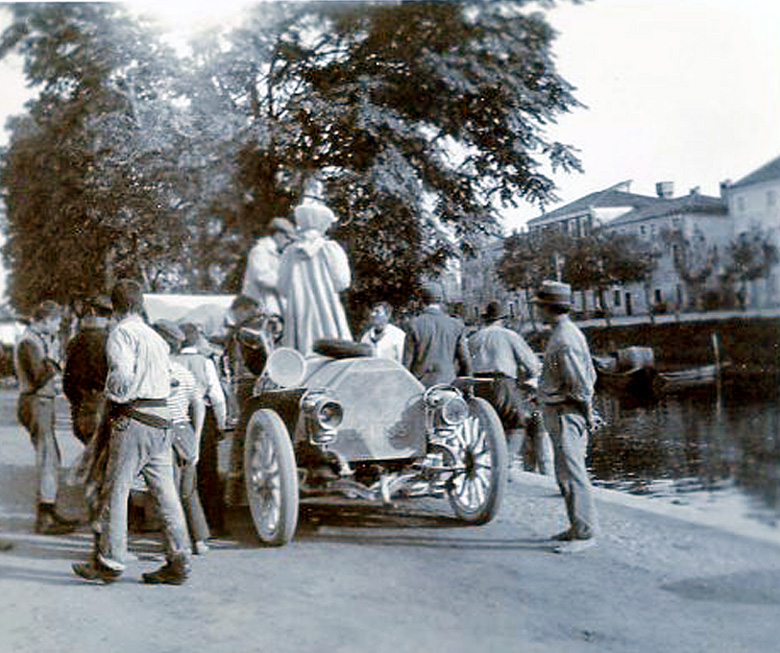
September, 1905. What is the location? Who is the woman who will travel over the Alps to Brescia in this Itala?
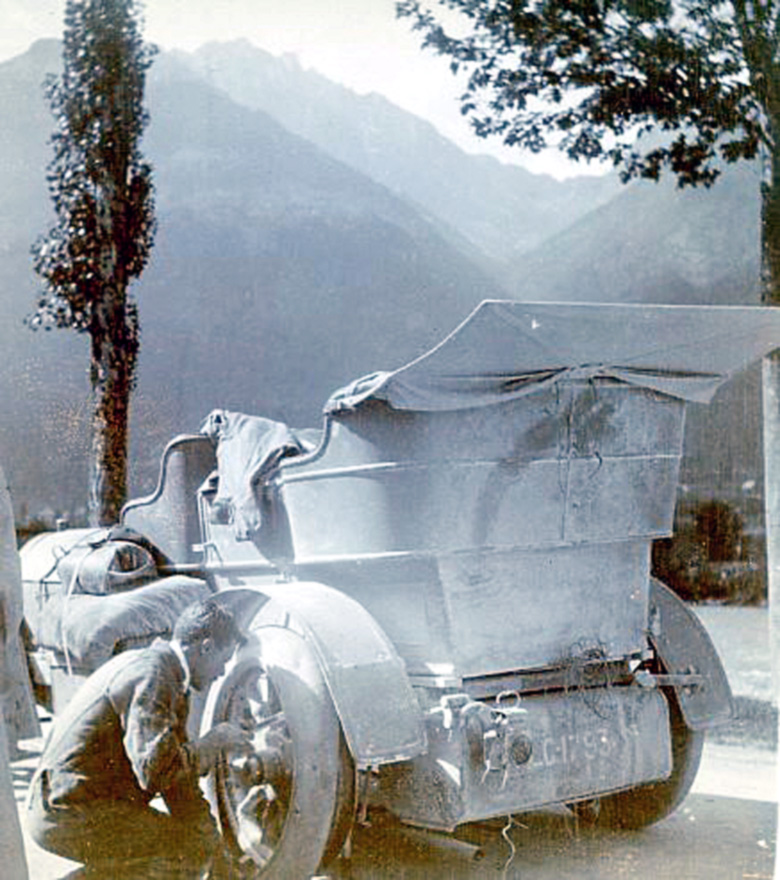
Under Mt. Cenis 8-9-05 September 8, 1905. Perhaps the date is incorrect and should be 3-9-05 as above?
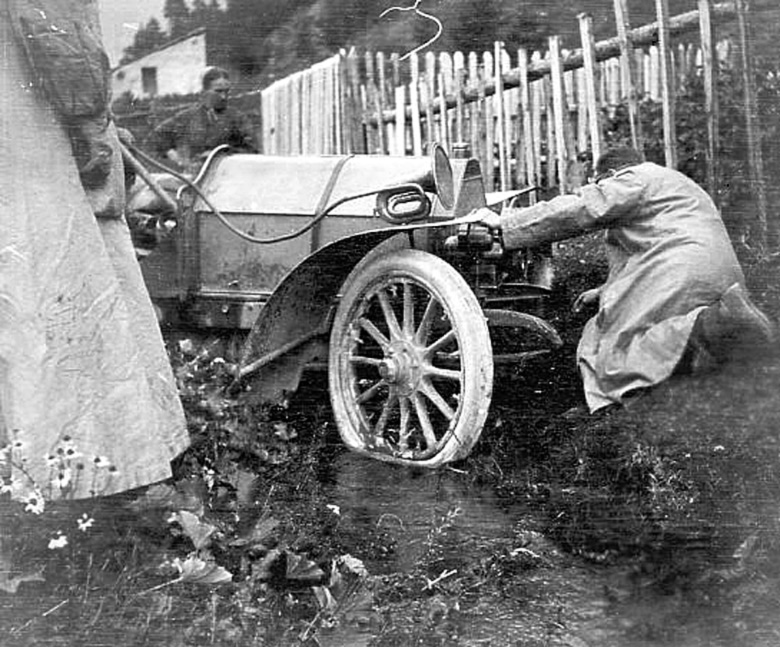
There was no writing on the back of this photo, but it appears to be the same car as the one driven to Brescia.
A Trip to Avignon
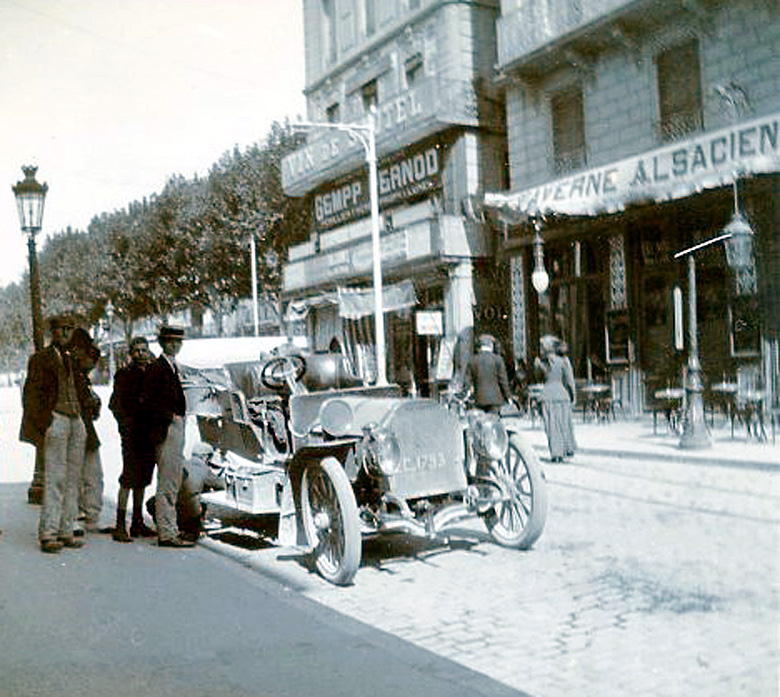
Avignon-21-9-05 September 21, 1905. Note the differences in the two Italas, and yet apparently the same license number.
Sidebar
1905: A Trip from Paris to Monte Carlo in Two Hours by Greg Vack
At about the same time as our Itala was working its way over the Col de Tende, visionary filmmaker Georges Méliès, best known for his surrealist film “Le Voyage Dans La Lune” (A Trip to the Moon), was producing this fanciful version of a (very) high speed trip from Paris to Monte Carlo. Introduced at the Folies Bergère on December 31, 1904, the film was incorporated into a stage production which featured the actors appearing live in a prologue and epilogue to the film. It was a considerable success and ran for over six months and was then shown as a standalone film to high acclaim on both sides of the Atlantic. The film was a satire of the automotive obsessions of King Leopold II of Belgium. Apparently the King is dissatisfied with the length of the 17 hour rail journey from Paris to Monte Carlo, and is approached by an automobile manufacturer who claims that he can do the trip in two hours. Many humorous mishaps ensue, most having to do with running over policemen and tax officials. Although the film was a critical success it was not a financial one due to the high cost and difficulties in dealing with the hand-painted prints, and Méliès’ career as a filmmaker started to decline.
